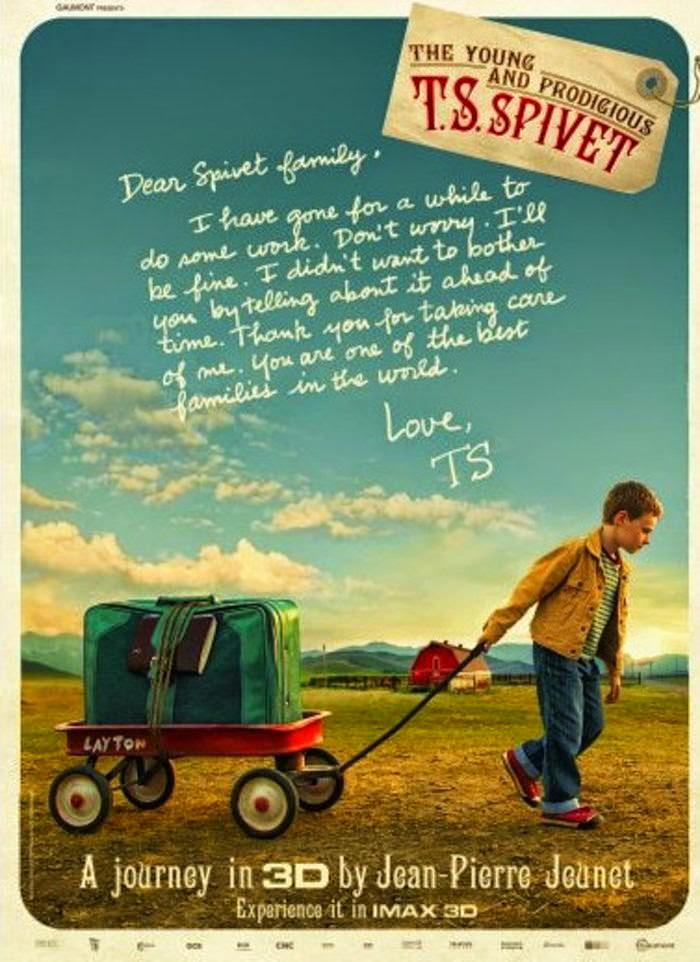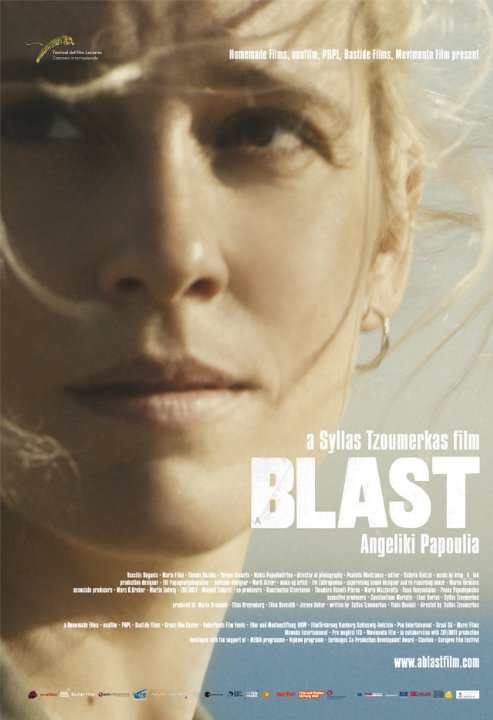The Making-of 2014
Case Studies
Overview
| Case studies | Rosie | The Young and Prodigious T.S. Spivet | A Blast |
|---|---|---|---|
| Country | Switzerland | France in co-production with Canada | Greece in co-production with Germany & the Netherlands |
| Director | Marcel Gisler (CH) | Jean-Pierre Jeunet (FR) | Syllas Tzoumerkas (EL) |
| Presented by | Producer: Susann Rüdlinger | Post-Production Supervisor: Sidonie Waserman | German co-producer: Titus Kreyenberg |
| Production company | Cobra Film AG (CH) | Epithète Films (FR) | Unafilm (DE) |
| Postproduction provider | Swiss Effects Film GmbH: Ruedi Schick | Tommaso Vergallo (France) | Graal Post Production, Athens (Greece): Konstantina Stavrianou |
| Budget approx.in Euro | 1.500.000€ | 5.000.000€ | 26 millions € |
| Genre | Fiction | Fiction | Fiction |
| Shooting Locations | Alstätten (CH), Berlin (DE) | Quebec, Alberta (Canada), Washington D.C. & Chicago (USA) | Athens (Greece) and Hamburg (Germany) |
| Camera(s) | Alexa, Sony PDW 800 | ARRI Alexa Plus & Alexa M rig 3D, File Format ARRI Raw | RED Epic |
| Image Ratio, Screening & Delivery Formats | 16:9, DCP 2K | Panoramic 2.39, 2D & 3D | Panoramic 2.39, 2K DCP |

Case Study 1 – «Rosie» by Marcel Gisler, presented by its producer, Susann Rüdlinger, Cobra Film AG, and its post-production provider Ruedi Schick, Swiss Effects Film GmbH
Focus on shooting with several digital cameras
Introduction: the original plan
This is a mid-life crisis film, very personal: about the director’s mother, a tribute to her. The producer admired the work of the director but he had not directed any film for 12 years.
The film was supposed to be shot over the four seasons, in a small village in Appenzel, and co-produced by Austria.
Change of plan & new production decisions
But the co-production did not happen and the budget of the film had to be cut significantly, by 400.000€.
This financial situation resulted in:
- a shortened shoot: from 30 to 25 days;
- one season only: summer shooting;
- a reduced crew;
- cut scenes;
- digital camera (ALEXA) vs. 35mm
These new parameters have been a real challenge for the crew, especially for the director who had only worked in 16 or 35mm. Besides, the weather kept changing, which has been a regular concern because of the numerous outside scenes.
Nevertheless, production schedule has been respected mostly thanks to a long preparation time and a close cooperation with the post-production company, Swiss Effects. Dailies checked every week: rough cut for crew. The producer has also issued a list of sequences that could be deleted during the editing phase.
Main technical problems, recommendations
Director and DoP decided to combine 2 cameras: ARRI Alexa and Sony PDW 800. The post-production company was not convinced by the camera choice. Despite camera tests, the crew kept their position because they wanted to get a different look. Indeed, the film being shot exclusively in summertime, it was important for them to visually give different season atmospheres.
Editing was done in Berlin. There have been problems with the mountain scenes (red dots) which should have been handled before being processed. It can happen with sunny scenes. Quality control is key. Using 2 cameras means a different quality, which is always challenging in post. Today Sony 55, bigger sensor, would have been a better choice + FS7 camera. And DoP and the director should always be present together during colour corrections.

Case Study 2 — «The Young and Prodigious T.S. Spivet» by Jean-Pierre Jeunet, presented by its post-production supervisor, Sidonie Waserman, and its post-production provider Tommaso Vergallo (France)
Focus on the international first complete dematerialized workflow in 3D
- Relationship between service providers and the VFX house;
- Trouble shooting: what is fixed on set, what in post?
Introduction & Production Challenges
This is a 3D film, a new experience for this demanding director, with a special universe. Besides, the film is shot in English, in Canada (Co-production), in Calgary, Alberta and studio in Montreal.
What is the best solution to bring data from Canada to Paris? Instead of Fedex/courier delivery, dematerialized workflow, quite new and expensive process at that time.
It is key to check data. With 3D: 2 eyes and the double of data!
JP Jeunet has always worked with the same crew, at the exception of the DoP: first collaboration with Thomas Hardmeier. The director uses storyboards and liked to do everything on set, editing included. Back up on set.
But unexpected challenges came up in terms of change of casting (the young actor) and of locations, with consequences on production schedule. Not easy to adapt. More visual effects needed.
3D implies a new approach, to reinvent new systems like making intermediate DCPs (about 50 of them) to check the editing. The crew has also been challenged by language (subtitles), rhythm, depth problems.
And the delivery list becomes significant with 3D: 14 master DCPs.
It is very important to know in pre-production what material will have to be delivered and when.
Conclusion: teamwork and constant dialogue between production, director, the rest of the team and post-production people, is key to face challenges and take the right decisions at the right moment.

Case Study 3 — «A Blast» by Syllas Tzoumerkas, presented by its German co-producer Titus Kreyenberg and post-production provider, Konstantina Stavrianou.
Focus on Developing an organic production and post-production workflow with foreign co-producers
Introduction
Maria Drandaki is the main Greek producer. This is her third production but first co-production. It all started in 2012. She attended Cinelink, with a treatment of the project, and met the German producer Titus Kreyenberg (Unafilm) for the first time. A few months later, she participated in Les Arcs Co-production market.
The original budget amounted to 1,2million euros.
As they were sharing the same vision of the film, they decided to join forces. They produced a mood trailer which gave a good idea of the story of the film, the atmosphere, the style and focused on the actress, already recognised internationally.
From the beginning, there is a strong teamwork. But the German co-producer acknowledges that he does not understand post-production. He knows it is important but he cannot digest all these technical information; thus he prefers to delegate this job and to work with a post-production company and a post-production manager. In fact, to his opinion, it is better to keep some distance because there can be vicious circles in post-production, especially during editing. But he maintains daily communication.
So there is a good production set up and a good start in terms of funding: a support from the Greek Film Centre and TV. The German co-producer is confident to raise about 500.000€ in his country & Eurimages because of part of the shooting (Hamburg) and post-production done in Germany. It seems to be an organic co-production and financial plan.
Production Challenges
But Greece goes through a major crisis, the situation gets also difficult in other European countries. Will the Greek film Centre pay?
New options are being considered and explored, even as a majority German film. New countries are being approached: France, Serbia, Croatia but the film is refused everywhere.
Konstantina Stavrianou knows the Greek producer but as the post-production was originally planned abroad, she was not on board. Further to this new, insecure funding situation, she reconsiders her position. Different financing plans are being issued, with cuts & trying to avoid spent obligations … at the exception of one part that could be shot in Hamburg (tank sequences).
In 2013, the team takes part into CineMart co-production market and Berlinale. They had very promising meetings with the Dutch Film Fund, ZDF Arte and sales agents.
But still, the funding results are disappointing in Germany, too low for a shoot and Eurimages turned down the project.
Hopefully, the Dutch confirmed their interest (the National Film Fund and the sales agent Fortissimo)…
But Greek television shuts down overnight.
This chaotic funding phase has resulted in a reduced budget (800.000€) and in many co-producers (4 in Greece, 2 in the Netherlands, 3 in Germany incl. ZDF Arte). Principal photography started late September and the post is being split between the various co-producing countries: the image editing (during shoot) is done in Greece (rough cut) as well as picture post and final deliveries, visual effects in Hamburg, sound editing & mixing in the Netherlands and finally Italy came on board, to cover, among others, post-production extras.
Conclusion
Again, thanks to a strong trust relationship and a constant dialogue between the co-producers, the shooting and the post-production happened quite smoothly despite a tight budget and a chaotic funding process.
Workflows of the 3 case studies (3 separate PDF by P. Ros)
- Case Study 1 ROSIE Workflow
- Case Study 2 The Young and Prodigious T.S. Spivet Workflow
- Case Study 3 A BLAST Workflow
The Making-of 2014
- General Presentation
- Introduction
- Technical Presentations [PDF] by P. Ros
- Case Studies
- Participants’ Projects
- Workflows of Participants’ Projects [PDF] by P. Ros
- The DCI Manufacturing Process and Digital Cinema Distribution
- New Models, New Perspectives
- Photo Gallery